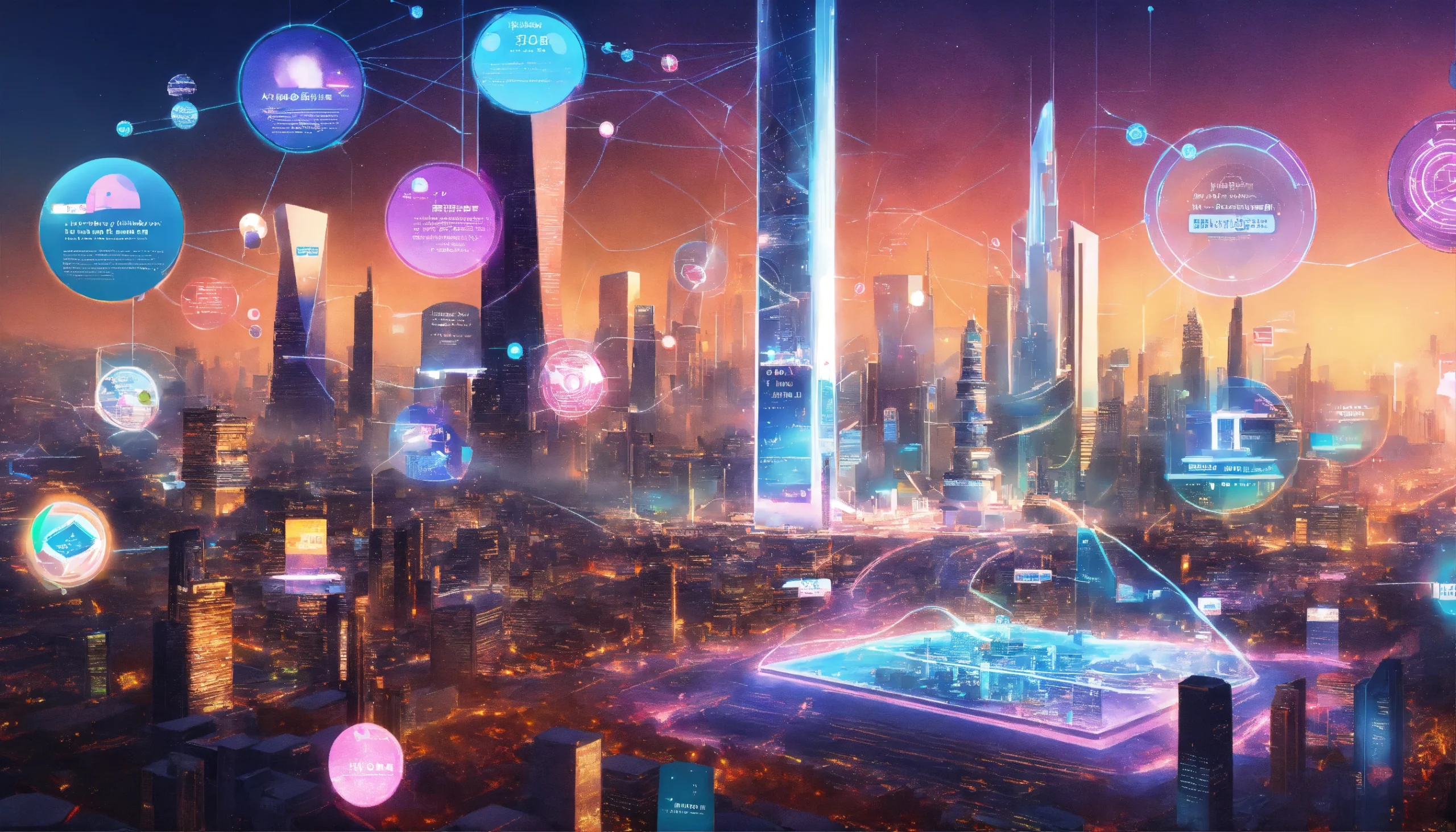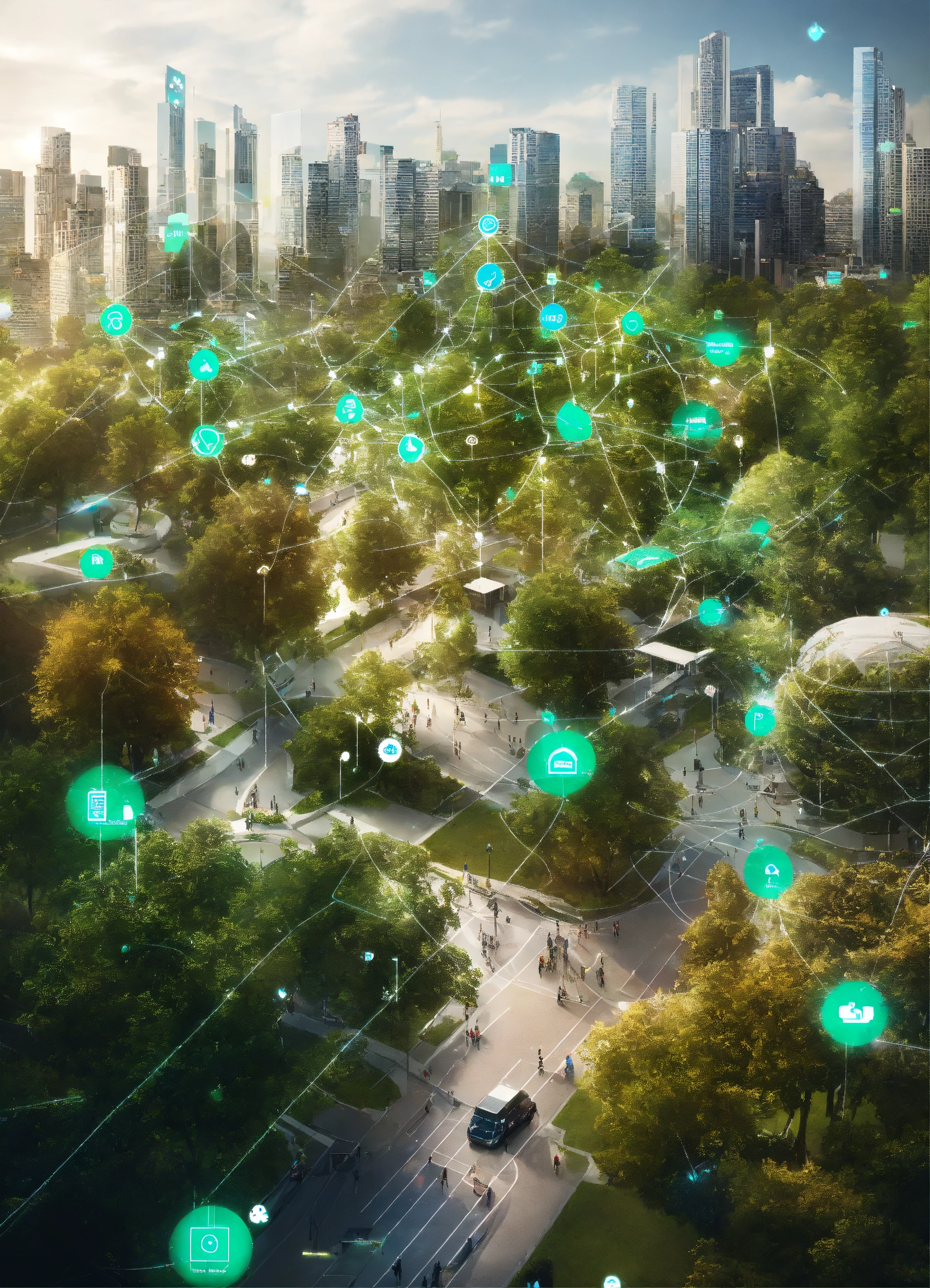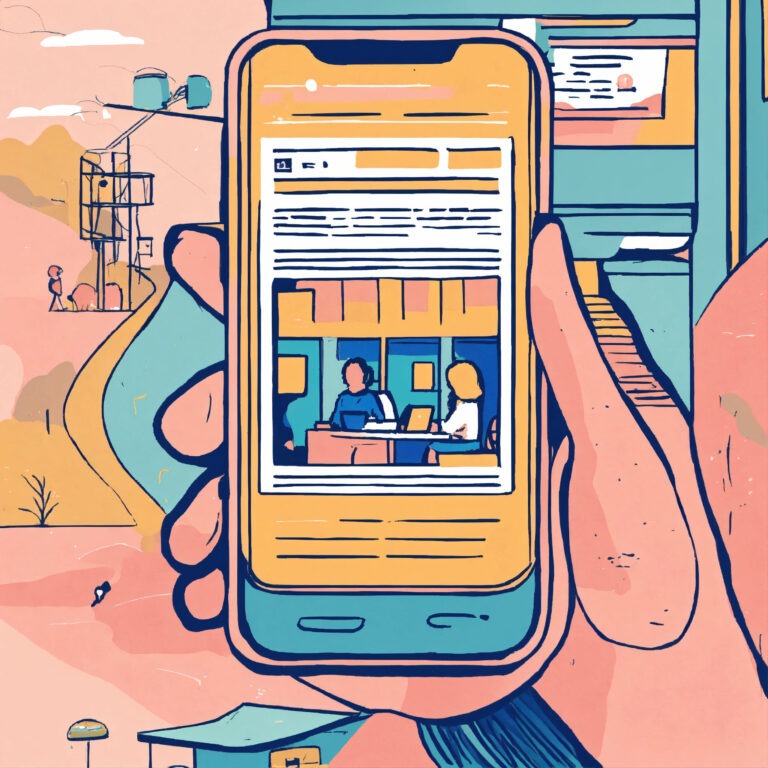It’s fascinating how the Internet of Things (IoT) is transforming your everyday surroundings into interconnected environments. By integrating smart devices into homes and cities, you are witnessing a revolution that enhances efficiency, sustainability, and convenience. However, this technological leap also raises concerns about privacy and security, as the more connected we become, the more vulnerable our data may be. In this exploration, you’ll discover how IoT is reshaping the landscapes of urban living and personal spaces, affecting not just how you live, but also how communities interact.
The Rise of IoT
Definition and History of IoT
An introduction to the Internet of Things (IoT) reveals a fascinating evolution of technology that connects everyday objects to the internet, allowing them to send and receive data. It all began in the early 1980s with a simple toaster that could connect to the internet, marking the nascent stage of what would grow into a vast network of interconnected devices. The term “Internet of Things” was coined by Kevin Ashton in 1999, and since then, the concept has rapidly evolved, powered by advancements in wireless technology, affordability of sensors, and the proliferation of mobile devices. You might be wondering, how did we get here? With the rise of cloud computing and big data, the possibilities of IoT expanded beyond mere connectivity to encompass a wealth of data analytics and automation that can transform your daily life.
As we transitioned into the 21st century, the technological landscape began to shift dramatically. Powerful hardware and software developments propelled IoT into the mainstream, where smart home devices, connected cars, and smart city infrastructure are no longer just futuristic dreams, but part of your everyday reality. Innovative companies across various sectors recognized the potential to enhance user experiences, streamline operations, and improve efficiency through the integration of IoT. It’s exciting to think about what this means for you and your community, as cities evolve and adapt to these technological advancements.
Current State of IoT Adoption
The current state of IoT adoption is nothing short of remarkable. In many ways, you are living in a golden age where smart technologies reign. From your smart thermostat that intuitively regulates the temperature of your home to intelligent transportation systems that ease traffic congestion in bustling cities, IoT solutions are becoming increasingly ingrained in daily life. Various reports predict that the number of connected devices could surpass 30 billion by 2025, emphasizing the rapid growth and acceptance of IoT technologies. Your day-to-day experiences are becoming more efficient, thanks to the myriad of devices that communicate seamlessly with one another.
For instance, cities have begun incorporating IoT solutions to enhance safety, efficiency, and sustainability. Smart streetlights equipped with sensors adjust their brightness based on pedestrian activity, reducing energy consumption, while connected garbage bins signal when they need to be emptied, optimizing waste collection processes. However, this paradigm shift is not without its challenges, as the proliferation of connected devices raises concerns regarding privacy and security. As you navigate this intricate web of connectivity, it’s crucial to be aware of both the profound benefits and the potential pitfalls that accompany the rise of IoT in your smart homes and cities.
Smart Homes
There’s a palpable excitement in the air when discussing the transformation that the Internet of Things (IoT) brings to the concept of smart homes. Imagine stepping into your dwelling to find a sanctuary crafted not just by walls and furniture but by a web of interconnected devices that enhance your daily life in ways you could have only dreamed of. This is a reality, driven by the enchanting promise of IoT, where your home learns your habits and adapts accordingly. In a world where technology and comfort collide, the possibilities seem endless.
How IoT is Revolutionizing Home Automation
Homes around the globe are becoming smarter at an astounding pace. With a simple voice command or a swipe on your smartphone, you can control lighting, temperature, security systems, and even kitchen appliances—elevating your living experience to a level of personalized convenience. Home automation driven by IoT allows for a seamless integration of various devices, creating an ecosystem that not only simplifies tasks but also anticipates your needs. Device coordination has never been better, and you can trust that your home is ready to respond to you.
Benefits of IoT in Smart Homes (Energy Efficiency, Convenience, Security)
Any discussion surrounding smart homes must account for the myriad of benefits offered by IoT technology. Energy efficiency is one major advantage, with smart thermostats and appliances that adapt to your usage patterns, cutting costs and reducing environmental impact. Convenience is another key factor; whether it’s adjusting the lights with your voice or remotely checking security cameras, the ease of management provides a unique peace of mind, which is invaluable in today’s fast-paced world. Then there’s security—IoT devices can bolster your home’s defenses with smart locks, cameras, and motion sensors, ensuring that you can relax, knowing that you can monitor your property from anywhere.
With these advancements, it becomes clear that IoT is fundamentally redefining your interactions with your living spaces, making it not just a home, but a dynamic living environment that supports your lifestyle and your family’s safety.
Challenges and Limitations of IoT in Smart Homes
Benefits aside, you must also be aware of the challenges and limitations of IoT in smart homes. One primary concern is cybersecurity; as your devices become smarter, they may also become more vulnerable to hacking. The very integration that delivers convenience can also expose your personal data if not properly secured. Additionally, the diversity of devices from numerous manufacturers often leads to compatibility issues, creating a disjointed experience that could undermine the benefits of a smart home.
Homes equipped with smart technology can struggle to provide a cohesive user experience due to the lack of standardized protocols across devices, which can be frustrating. As you navigate this landscape, remember that the risks like potential data breaches or unreliable connectivity can be mitigated with proper precautions, but they are worth considering as you think about integrating IoT into your home.
Homes that embrace smart technology must continuously balance the allure of innovation with a mindful approach to security and compatibility. Being aware of these potential pitfalls will empower you to make informed decisions as you create your ideal smart home environment.
Smart Cities
The Concept of Smart Cities and IoT’s Role
Many people envision smart cities as a futuristic dream, yet they are becoming a reality thanks in large part to the Internet of Things (IoT). Smart cities leverage interconnected devices that communicate with one another, facilitating enhanced urban living for their inhabitants. You can imagine a place where everything from traffic lights to waste management operates optimally and efficiently, all due to IoT technology. The role of IoT in these environments is not merely supportive; it acts as the backbone that allows cities to intelligently adapt to the needs of their residents in real-time.
Smart technology transforms the conventional approach to urbanization. Rather than merely expanding cities outward, IoT empowers you to maximize existing infrastructures. You can think of it as creating a living organism—one that responds dynamically to changes in your daily activities and informs decision-makers about how to improve your urban experience while minimizing environmental impacts.
IoT Applications in Urban Planning and Management
Smart urban planning and management are crucial for enabling cities to evolve sustainably. With IoT applications, urban planners can gather crucial data-driven insights to better understand traffic patterns, population density, and resource usage within cities. By leveraging this data, you can anticipate challenges and optimize urban layouts to cater to your community’s needs more effectively, ensuring both accessibility and sustainability.
Conceptually, adhering to IoT applications in urban planning can significantly enhance the quality of life in your city. This means enabling smarter allocation of resources, reducing energy consumption, and harnessing information to improve traffic flow—all geared towards making your everyday commute smoother and more enjoyable. Imagine receiving real-time updates on public transport, or perhaps, being directed to available parking spots through your smartphone. The practical implications span far and wide, affecting various facets of city living.
Improving Public Services and Infrastructure with IoT
Cities around the world are increasingly deploying IoT technologies to bolster public services and enhance infrastructure quality. From smart streetlights that adapt their brightness based on pedestrian traffic to sensors that monitor air quality, the integration of IoT into public services offers unparalleled opportunities to elevate your urban experience. You will find infrastructure becomes more responsive to your needs, fostering a safer, cleaner, and more efficient community.
Another advantage of incorporating IoT technology into public services is the enhancement of emergency response systems. For instance, IoT-enabled tools can facilitate quicker communication between various departments, such as fire, police, and medical services. This seamless coordination allows for faster reaction times in emergencies, ultimately promoting a more resilient urban environment. As a citizen, these improvements not only increase your overall wellbeing but also foster a sense of security, knowing that technology is being used for the greater good of your community.
The Impact of IoT on Daily Life
Despite the rapid advancements in technology, one might still underestimate the profound impact that the Internet of Things (IoT) has on your day-to-day existence. As IoT devices become increasingly ubiquitous in smart homes and cities, they revolutionize not only how you live but also how you interact with your environment. Imagine stepping into your home and the lights automatically adjusting to your preferred brightness while your thermostat sets the perfect temperature without you so much as lifting a finger. This seamless integration of technology into your everyday routine is just the beginning of what is fundamentally altering your lifestyle.
Changing Lifestyles and Behaviors
Lifestyles are shifting in monumental ways as IoT fosters a new era of connectivity and convenience. You might notice how simple tasks become streamlined; whether it’s through wearable health devices that monitor your fitness in real-time or smart appliances that allow you to control your home remotely. Such innovations encourage a more proactive approach to your health, safety, and overall wellbeing, allowing you to make informed decisions rather than reactive ones. As a result, your daily activities are infused with an element of ease and control that was previously unattainable.
As your everyday habits evolve, so do your interactions with your community. You may find that smart city projects foster a sense of connection among residents, providing you with access to public services and amenities through your smartphone. This interconnectedness encourages a growing awareness and participation in civic life, enhancing your sense of identity within your community. The impact is clear: IoT is not just about individual convenience, but about fostering a collective consciousness that stretches beyond your front door.
Increased Efficiency and Productivity
IoTs are transforming the traditional notions of work and productivity. With smart devices in your home, you can automate countless tasks, allowing you to dedicate your time to what truly matters. Consider your morning routine: as your coffee brews and your shower warms up automatically, you’re able to organize your day ahead, making every minute count. This level of automation and intelligence leads to a more efficient lifestyle, enabling you to manage your personal and professional responsibilities with ease.
Daily activities become more productive as IoT facilitates real-time data collection and analysis, optimizing how you approach tasks at work and in your personal projects. Imagine having an automatic inventory system that alerts you when supplies are low, or smart scheduling assistants that coordinate meetings without you having to lift a finger. These advancements ensure you can operate at peak efficiency, maximizing not only your time but also your potential.
New Business Opportunities and Job Creation
IoTs are reshaping the economic landscape, presenting new business opportunities and fostering job creation in innovative sectors. As you navigate through smart cities, you may encounter a plethora of startups focused on developing IoT solutions that cater to your everyday needs, from smart security systems to energy-efficient devices. This wave of enterprise not only propels economic growth but also creates a demand for skilled professionals, generating a host of new job roles that cater to the evolving marketplace.
Changing consumer behaviors and preferences are a driving force behind this evolution. As you adapt to a world filled with smart solutions, the businesses that support this transition — whether through product innovation or service delivery — will inevitably thrive. The ability of IoT to enhance customer experience and operational efficiency contributes to this economic shift, enriching your community while paving the way for numerous career pathways you may not have considered prior. It’s a cycle of innovation that not only benefits you but also shapes the workforce of the future.
Security and Privacy Concerns
To fully appreciate the transformative potential of the Internet of Things (IoT), it’s necessary to acknowledge the accompanying security and privacy concerns. As you integrate various smart devices into your home and city infrastructure, you’ll find that they come with heightened vulnerabilities. The interconnectedness of these devices creates numerous backdoors that hackers can exploit, allowing unauthorized access to sensitive data and potentially leading to catastrophic breaches. Smart locks, cameras, and even thermostats have been shown to possess flaws that can be easily manipulated. This brings to light a crucial aspect of IoT: the more connected we become, the more exposed we make ourselves.
Vulnerabilities and Risks Associated with IoT
Any smart device is only as secure as its weakest link. With every new device you add to your network, you increase the potential for vulnerabilities. Weak passwords, outdated firmware, and insufficient encryption are just a few notable examples that can compromise the integrity of your personal data. Furthermore, many IoT devices are not designed with security in mind, leaving them open to attacks. When considering your smart home or city, it’s vitally important to understand the risks associated with each connected device.
Protecting Personal Data and Preventing Cyber Attacks
Cyber threats are inevitable in the world of IoT, but your ability to guard against them is crucial. One proactive approach is to regularly update the firmware on your devices, ensuring you benefit from the latest security patches. It’s also wise to establish strong passwords and enable two-factor authentication whenever possible to fortify your network against potential breaches. Additionally, segregating your IoT devices on a separate network can help limit access to your most sensitive information, adding an additional layer of security for your personal data.
Protecting your personal data in a world driven by IoT is not just about using technology wisely; it’s also about being vigilant. Frequent monitoring of your devices and understanding their functionalities can help you identify anomalies that may indicate a security breach. By keeping track of which devices are accessing your network, you take ownership of your digital footprint, allowing for quicker action should any suspicious behavior arise.
Regulations and Standards for IoT Security
To navigate the complex landscape of IoT security, you must be aware of existing regulations and standards designed to protect consumers. Governments and organizations are increasingly pushing for guidelines that ensure minimum security standards for IoT devices. By adhering to these standards, manufacturers can contribute to a safer environment for users like you, who seek both convenience and security in connected living. It’s a collective effort that requires commitment from both producers and consumers to create a robust security framework.
Understanding the regulations and standards surrounding IoT is key to protecting yourself and your data. As the landscape evolves, remaining informed about legislative changes and their implications for your devices will empower you to make better choices. Regulations not only provide a safety net for your personal information but also hold manufacturers accountable for the security of their products, ensuring a more secure IoT ecosystem.
Environmental Sustainability
Once again, the transformative power of IoT emerges as a key player in fostering environmental sustainability within smart homes and cities. As urbanization continues to escalate, the demand for sustainable living solutions has never been more pressing. The Internet of Things not only facilitates connectivity between devices but also opens up avenues for effective monitoring and management of resources. By adopting IoT technologies, you can significantly contribute to minimizing your ecological footprint while enhancing your quality of life.
IoT’s Role in Reducing Energy Consumption and Waste
Reducing energy consumption and waste is one of the most profound impacts of IoT on sustainability. With smart home devices, such as thermostats and light bulbs, you can regulate energy usage based on real-time data and user patterns. For instance, smart thermostats adjust heating and cooling schedules according to your preferences and daily routines, which could lead to a remarkable reduction in energy costs and consumption. Moreover, energy-efficient appliances connected to the IoT can provide insights into energy use, enabling you to make informed decisions and adopt sustainable practices in your home.
Furthermore, smart waste management systems can optimize trash collection routes based on fill-level sensors in bins, ensuring that resources are utilized efficiently. This reduction in unnecessary trips not only decreases operational costs but also lowers carbon emissions, creating a cleaner and more sustainable environment. Overall, IoT provides you with the tools to transform your approach to energy consumption and waste management, making it both easier and more efficient.
Optimizing Resource Allocation and Management
Energy management is crucial for achieving sustainability in modern smart cities. IoT enables you to optimize the allocation of resources through enhanced data collection and analysis. This can lead to smarter energy grids that efficiently distribute power by balancing demand and supply, thereby further reducing wastage. With smart meters and sensors, utility providers now have better visibility into energy consumption patterns, allowing them to predict peak usage times and deploy resources accordingly.
This optimization extends beyond energy; water management is another vital area where IoT shines. Smart irrigation systems equipped with soil moisture sensors can determine the exact needs of your garden, preventing water waste while promoting healthier plant growth. Additionally, leak detection sensors can alert you to any plumbing issues, allowing for immediate repair and reducing water loss. By utilizing these IoT solutions in both urban and rural settings, you can play a part in ensuring resources like water and energy are managed efficiently, fostering a more sustainable environment.
Creating a More Sustainable Future with IoT
Sustainability is the cornerstone of a flourishing future, and the integration of IoT in smart homes and cities is paving the way for significant advancements in this area. As you adopt connected technologies, you not only enhance your own living conditions but also contribute to a larger goal of sustainability. Implementing smart solutions means reduced resource consumption, improved waste management, and ultimately, a smaller environmental footprint for you and your community. The cumulative effect of countless individuals making smart choices can lead to a paradigm shift towards greener living.
Waste reduction is a critical aspect of the sustainability journey. By leveraging IoT technology, you can identify and minimize waste in various aspects of daily life. For example, smart appliances can manage energy use and provide data-driven insights into the longevity of products, leading to more thoughtful purchasing decisions. This conscious approach fosters a culture of sustainability—one where you actively participate in championing a greener future for all.
Summing up
Considering all points discussed, the Internet of Things (IoT) is undeniably transforming the landscape of smart homes and cities, weaving a tapestry of convenience, sustainability, and enhanced quality of life. You may have noticed how simple devices in your home, such as smart thermostats or connected security systems, are not just innovations but gateways to a more efficient environment that adjusts to your needs and preferences. Beyond your front door, cities are themselves becoming interconnected systems, optimizing energy use and reducing waste, all through the collective intelligence of interconnected devices. In this evolving world, you are not just an observer but an active participant in the evolution of your surroundings.
As we embrace this new era, it’s imperative to recognize that the true power of IoT lies in its ability to enhance human connections and foster a sense of community. You have the opportunity to engage with the technology that shapes your world, contributing to smarter solutions that benefit not only your household but also your entire community. This journey toward a more intelligent future is only beginning, and it’s up to you to harness the possibilities presented by IoT in your daily life. Embrace these innovations, as they pave the way for not just smarter homes and cities, but also a more sustainable and connected tomorrow.





